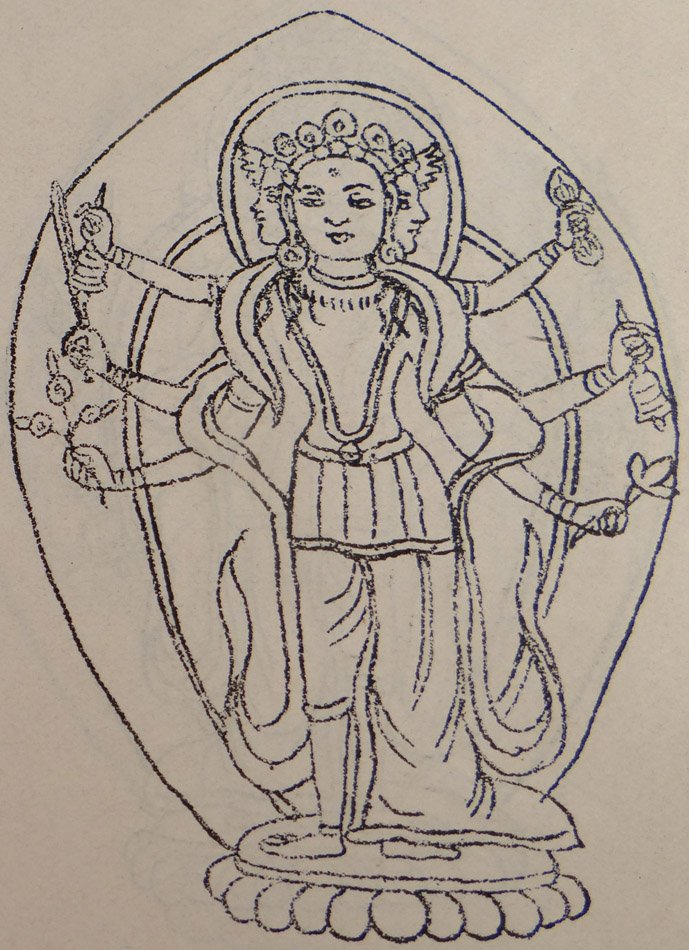The Indian Buddhist Iconography
by Benoytosh Bhattachacharyya | 1958 | 51,392 words | ISBN-10: 8173053138 | ISBN-13: 9788173053139
This page contains an iconography image of 108 forms of Avalokiteshvara (60): Mahamanjudatta Lokeshvara and represents of the book Indian Buddhist Iconography, based on extracts of the Sadhanamala English translation. These plates and illustrations represent either photographs of sculptures or line-drawing reproductions of paintings or other representations of Buddhist artwork.
108 forms of Avalokiteśvara (60): Mahāmañjudatta Lokeśvara

Fig. 60A: Mahāmañjudatta Lokeśvara
This is figure 60 in a series of 108 forms of Avalokiteśvara from the Macchandar Vahal, Kathmandu, Nepal.
60. Mahāmañjudatta Lokeśvara. In all other respects he is similar to No. 59. But he carries the Ghaṇṭā, the sword, and the Ratnapallava in his three right hands, and the Vajra, the Ghaṇṭā and the Utpala in his three left.
59. Mahāpaṭala Lokeśvara. He is three-faced and six-armed and stands on a lotus. He holds in his three right hands the Vajra, the Viśvavajra and the Utpala, and in his three left, the banner, the Ghaṇṭā and the Kamaṇḍalu.
The Bodhisattva Avalokiteśvara (The Watchful Lord) also called Padmapāṇi (Lotus bearer) is the spiritual son of the Dhyāni Buddha Amitābha. He is one of the most popular Bodhisattvas of the Buddhist Pantheon having as many as 108 different forms [viz., Mahāmañjudatta Lokeśvara].
